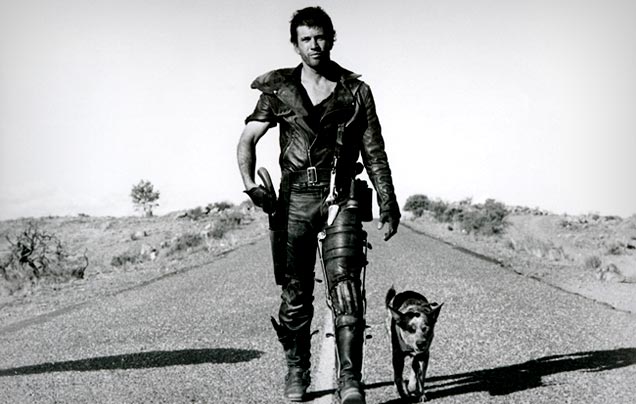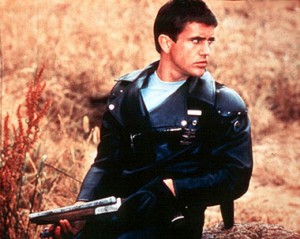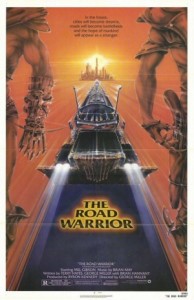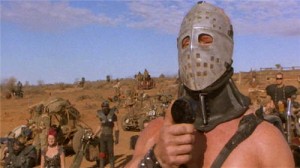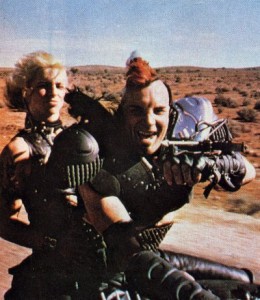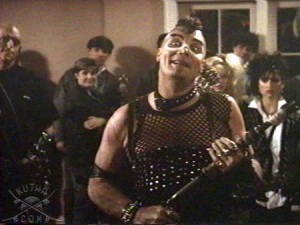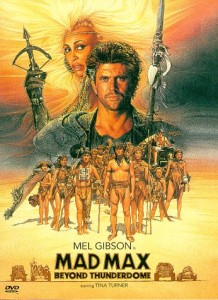The Mad Max trilogy has a special place in my heart.
The first movie was released in 1979, an Australian low budget exploitation revenge drama. It imagines a world set “a few years from now” where a very gauche set of hells angels/hipsters tool around on motorcycles, at war with a small group of disheveled cops hamstrung by bureaucracy, with a practically invisible small town populace caught somewhere in the middle.
Amongst the cops is Max Rockatansky (a baby-faced Mel Gibson, 22 at the time of shooting) who, along with his wife and baby, decide to get away from the madness, give up the unappreciated law-enforcement life and do something else. But the bikers track them down, and when bad things happen to his family, Max straps on the leathers and climbs into his V8 Interceptor to deliver freaking brutal vengeance upon the heads of those nasty biker dudes, especially the one they call “Toecutter.”
The performances and pacing are all over the place—sections feel stitched together like the movie was shot on weekends with an amateur cast, and maybe it was.
What really resonates are the action sequences on the road. Miller’s ability to create suspense and stage these high speed stunts is unparalleled. Even if he’d only made Mad Max, his first feature, he’d be remembered as a hell of an action director.
Mad Max was a huge hit in Australia, though it never found an audience in the US, despite (or maybe because) Warner Brothers redubbed the dialogue with American-accented voice actors, concerned as they were about the heavy Aussie twang.
However, the film’s success elsewhere was the first step in Gibson becoming an international star. He went on to make two great films in this period, Gallipoli and The Year of Living Dangerously with another Australian, Peter Weir, before strapping on the leathers for a second go at Max.
Mad Max 2 was released in 1981. Again, Warner had the US distribution and figuring so few people in North America had seen the first film, renamed it The Road Warrior. Turned out to be a good idea, as the picture earned big box office in the States. I’d say for pure thrills it gives another big entertainment from that year, Raiders of the Lost Ark, a run for its money.
You don’t have to have seen the first movie to enjoy this one; there’s a handy montage early on showing scenes from the first picture. Gibson looks to have aged 15 years and is now the eponymous road warrior, still driving his Interceptor, his only companion a blue heeler named Dog.
He’s out in wastelands that have become a great deal less hospitable since the last film. Gasoline is what everyone is looking for, and gangs of (this time genuinely frightening) bikers will stop at nothing to have the sweet juice. Max finds himself in the company of The Gyro Captain (Bruce Spence) and a group of mostly regular folks who run an oil refinery, constantly fighting off the weird warriors of the wasteland. Max throws in with these people, initially for his own gain—he wants their gas too—but eventually shows a more selfless side.
(This fellow is the leader of the baddies, named The Lord Humungous. Also known as The Ayatolla of Rock and Rolla.)
Max’s iconic, strong, silent type might as well be the lone gunslinger in a spaghetti western, or a samurai in a Kurosawa picture. His morality and motivations are ambiguous, and even when he does the right thing, we never really know why.
Again, what people remember about this film are the top notch action scenes. Long before CGI took a lot of the fun out of action movies, Miller staged a 13-minute-long truck and modified-car chase with 80 vehicles that still leaves audiences in slack-jawed astonishment. I watched it for the first time on Blu-Ray and I’m amazed at the technical achievement, editing and continuity.
People talk about the influence of Blade Runner on the look of science fiction films in the years since, but I’d say Mad Max 2: The Road Warrior had a broader cultural impact, given its wider mainstream success. Everything about the film, especially the costumes and production design, has become shorthand for post-apocalyptic imagery since. And let’s face it, this is a culture kinda obsessed with the End Times. Don’t forget Vernon Wells, who played the Number One mohicaned biker warrior Wes…
…he donned the chains a second time in John Hughes’ Weird Science a few years later, which was hilarious.
One more bit of trivia about Mad Max 2: The Road Warrior: It was filmed in Broken Hill, a town in New South Wales, 800 kilometres west of Sydney, which also was used as a location for some of Priscilla: Queen of the Desert.
Mad Max: Beyond Thunderdome was Gibson’s last kick at the franchise before he moved on to the Lethal Weapon movies. Released in 1985, it was a PG-13 picture, while the first two were hard R-rated movies. It’s something you notice almost right away, the tone is much more kid-friendly and jokey, which is weird. This is a long way from that gritty ’79 exploitation picture that started it all.
Max—now a shaggy “raggedy man” eking out a living in the desert—has his worldly possessions liberated, leading him to a pig-shit fueled hive of scum and villainy, Bartertown, and its grande fromage, Auntie Entity, played by the amazing Tina Turner in a chainmail dress. Weirdly, Spence is back, again as a pilot, but not the same one from the last picture. The Thunderdome is a gladiatorial cage where “two men enter, one man leaves.”
The first act is swell—introducing Bartertown and placing Max in the middle of a power struggle, a la Hammett’s Red Harvest, Kurosawa’s Yojimbo, and Leone’s A Fistful Of Dollars.
The middle act is the slack one: The second movie featured one scene-stealing feral kid, this one a whole colony, though they’re kind of the Ewoks of the trilogy, too cute for their own good.
The good news if you stick it out, you can expect a terrific chase sequence to finish off the deal, this time involving a truck on rails.
All that’s to say, there are elements to enjoy, especially in the production design—Thunderdome still has a cultural echo. But this picture feels a far more calculated, tentpole-styled beast. I remember reading an interview with Gibson at the time on set, where he admitted he didn’t want to do this movie.
Perhaps feeling the family friendly direction was more his spirit, Miller went on produce the popular porcine picture Babe, and directed the much-underrated Babe: Pig In The City, along with the animated Happy Feet movie. He also directed The Witches of Eastwick and Lorenzo’s Oil.
For years Miller has tried to shoot a fourth installment of the series called Mad Max: Fury Road. It was set to go to camera with Gibson in 2001 in Africa, but 9/11 happened and the production was scrapped. A few false starts since, but it looks like it’ll be good to go in January 2012, returning to Broken Hill, NSW, according to this story.
And best of all, no Gibson, whose starshine is considerably dimmed these days. Instead, it’ll be Tom Hardy in the lead. They really couldn’t have chosen a better actor to reignite the franchise.





